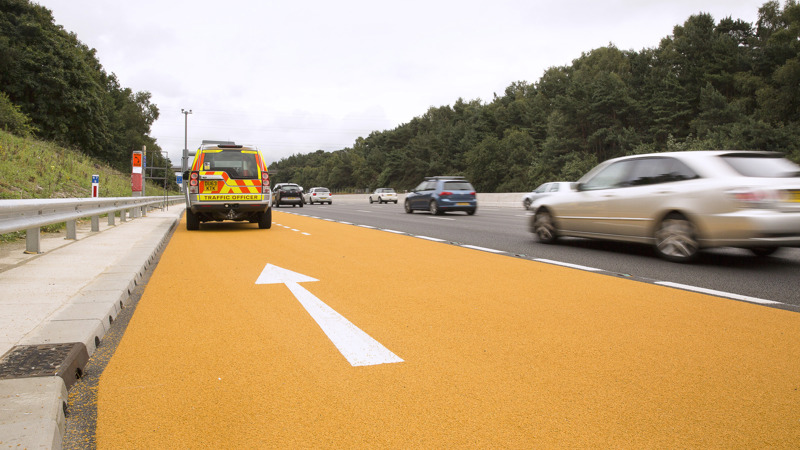Emergency area width review

We recognise that drivers are concerned about not being able to find a safe place to stop in an emergency. On smart motorways, the hard shoulder is replaced by emergency areas where drivers can stop, if they cannot make it to the nearest motorway service area or exit the motorway. Smart motorways also have a system of additional safety measures which are not in place on conventional motorways.
Emergency areas are wider than hard shoulders and set back from live traffic lanes – so a vehicle in one is much less likely to be struck by moving traffic.
In March 2020, the Secretary of State for Transport published the Smart motorway evidence stocktake and action plan, which set out 18 actions that will further improve safety on smart motorways.
The plan included an action to review all existing emergency areas and to widen any which were less than the current standard, if feasible and appropriate. The current standard width is 15 foot (4.6 metres). Design standards before 2015 permitted emergency area widths to be 13 foot (4 metres) where necessary. A conventional hard shoulder is 11 foot (3.3 metres) wide.
We commissioned an independent review to evaluate the widths of all emergency areas on operational sections of smart motorways.
Independent review findings
The review concluded:
Emergency areas between 14 foot five inches and 15 foot wide
The difference between these emergency areas and the current standard width of 15 foot is only seven inches (0.2 metres) – the width of a white line.
Widening these emergency areas would not give any measurable safety benefit.
Emergency areas less than 14 foot five inches
These emergency areas - a total of 13 – should be investigated further.
The review included a location-specific high-level assessment of the feasibility of widening these 13 emergency areas.
Our response
We commissioned an independent review to evaluate the widths of all emergency areas on operational sections of smart motorways.
Two emergency areas on all lane running sections – on the M1 and M25 - required widening. This work is on track to be completed by March 2023.
A further seven are on dynamic hard shoulder sections and were due to be widened as part of the programme to upgrade these sections to all lane running. We will update our plans for re-examining these as soon as possible.
The Government's 2020 Smart Motorway Evidence Stocktake and Action Plan included an action to review existing emergency area widths. Where they are narrower than the current standard a commitment was made to widen them if feasible and appropriate. This report summarises the findings of an independent review, and our response and the actions we are taking.
The Government's 2020 Smart Motorway Evidence Stocktake and Action Plan included an action to review existing emergency area widths. Where they are narrower than the current standard a commitment was made to widen them if feasible and appropriate. This report details our response to an independent review and includes the actions we are taking.
The Government's 2020 Smart Motorway Evidence Stocktake and Action Plan included an action to review existing emergency area widths. Where they are narrower than the current standard a commitment was made to widen them if feasible and appropriate. This report details the findings of an independent review of emergency area widths and includes for the narrowest emergency areas a high-level assessment of the feasibility of widening.
